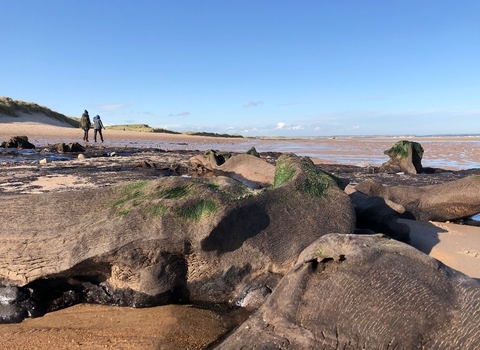What was it?
These are the remains of mature trees that are thousands of years old – technically they are called sub-fossils because they are still not old enough, or well preserved enough, to be true fossils. They were once forests of mixed deciduous trees – eg oak, alder, hazel.
How old is it?
They are roughly 7,000 years old – this is the latest period of Earth’s history which geologists call the Holocene; it’s part of the Quaternary.
Where did it live?
In woodland in what is now the North Sea. During the last ice age sea level was at least 120 metres below present (because water was locked up in the world’s ice sheets). Our part of the North Sea was dry land – just to the south we call it Doggerland. By 7,000 years ago sea level had largely recovered as the ice sheets melted. Sea level may have still been low enough for the trees to grow, or it may have been at its present level but the trees were able to survive protected behind dunes which were then located east of their present position. The dunes were later blown inland, exposing the woodland to high tides. The peat associated with the trees would form in swampy ground behind the dunes.
Where are the fossils found?
Along the Northumberland coast when the conditions are right – the dunes get eroded, or the beach sand is moved by the sea, the remains of large trees become exposed. Sometimes they are in their “life position” and sometimes they are just large logs in a layer of peat. Very rarely the footprints of stone age people are found in the mud beside these trees.
Are these animals still alive today?
Yes, all of these tree species are alive today – though we are having to work hard to make sure our precious woodland is preserved and protected… and encourage people to plant even more!

